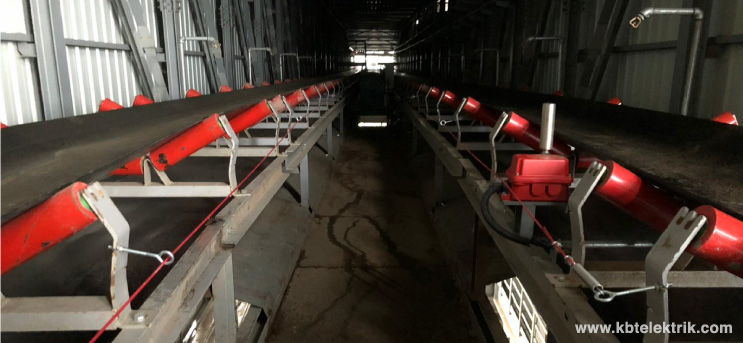Conveyor belt systems can transfer, rotate, raise, grip, spool, rotate, index, align, merge, rotate, sort and more.
A simple explain would be, large wide belts fixed on conveyor rollers in a loop. These systems, which generally work with the power provided by the motors, consist of layered materials called belts that provide pull of the goods and two or more wheels called rotors that fix the belt. The rotary motion of the rotors allows one side of the belt to move in one direction, while the other wheel still rotates in the same direction. Conveyor systems have several twists and turns and can be easily protected by cone shaped wheels or rotors and allow the conveyor to rotate. When installing the conveyor system the safety of the systems is effective in eliminating the risk of accidents for working people.
Function of Conveyor Belt;
Conveyor belts can transport merchandise in a straight direction or with changes of direction and elevation. The purpose of the belt is to regulate product movement along an assembly chain. They are constructed in various sizes to maximize the conveyor belt function, and the different speed ranges are controlled by the devices used to power the belts.

Advantages of Conveyor Belt;
The most advantage of the conveyor belt system are that it reduces the workload and minimizes the time problem with the service it provides.
Conveyor belts provide assembly and product line hygienic and regular. Besides ıt encourage protects in operations. Conveyor belt systems permit standardization for product management. For more advantages of the conveyor belt systems don't forget to check our "What is a Conveyor Belt? History and Usage Areas of Conveyor Belts" article.
Industries use of conveyor belts;
Conveyor belt systems, one of the most common methods used to transport merchandise from one place to another, are produced in accordance with the needs and usage requirements of each sector.
The use of belt systems varies in a range from the production stages of heavy industrial products such as mining, metal-steel to the production of sensitive and sensitive products such as food and medicine. These conveyor belt systems are frequently encountered in textile companies, airports, automotive industry and transportation processes.